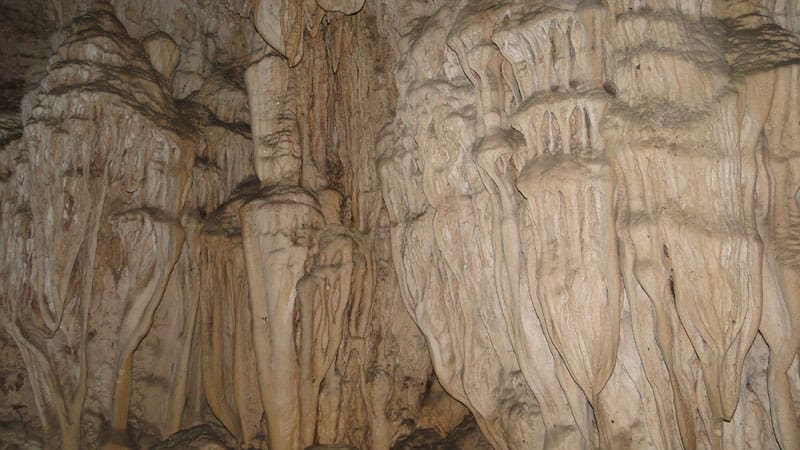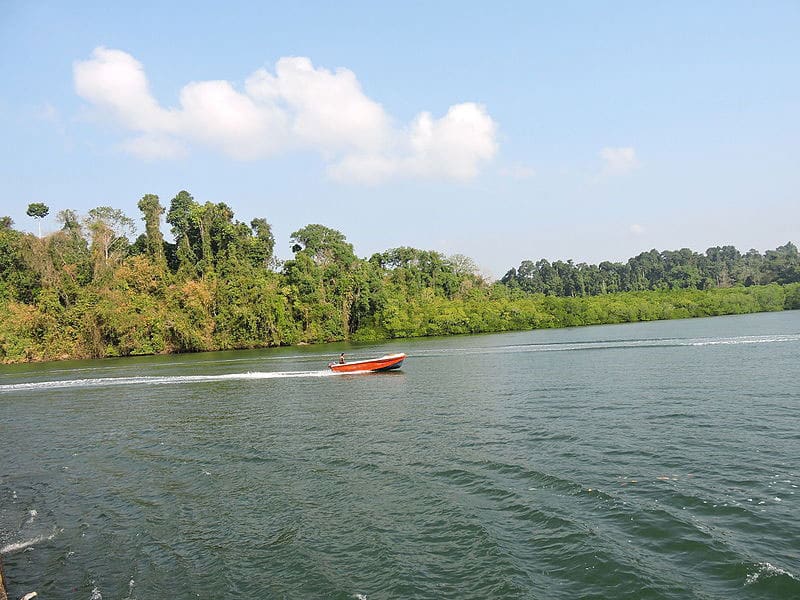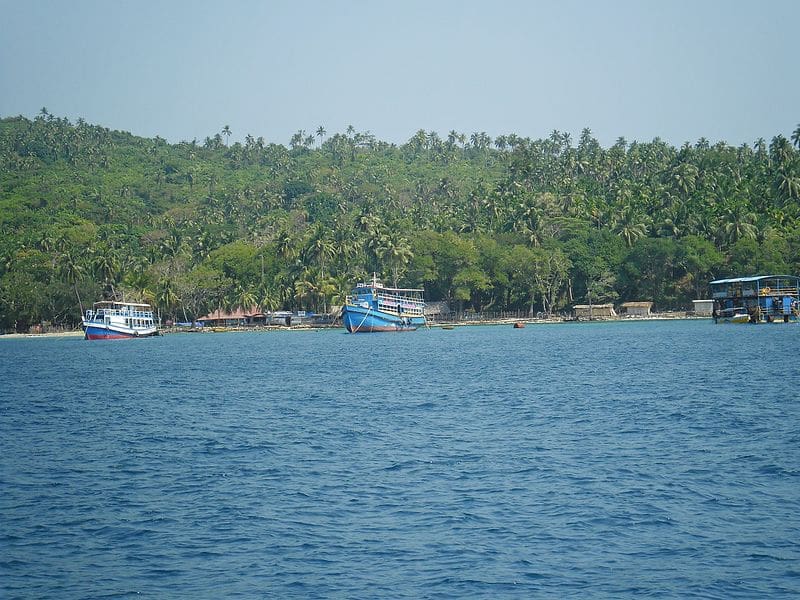The Andaman and Nicobar Islands , a tropical archipelago nestled in the Bay of Bengal, are renowned for their pristine beaches, lush rainforests, vibrant coral reefs, and diverse wildlife. This remote paradise is home to some of India’s most breathtaking national parks, each offering a unique glimpse into the region’s rich biodiversity and natural beauty. From dense mangroves to marine sanctuaries teeming with life, these national parks are a haven for nature enthusiasts, adventure seekers, and eco-tourists alike.
In this guide, we’ll explore the Top 5 National Parks in the Andaman and Nicobar Islands , highlighting their unique features, flora and fauna, and why they deserve a spot on your travel bucket list.
1. Mahatma Gandhi Marine National Park: A Marine Wonderland
Why Visit Mahatma Gandhi Marine National Park?
Located near Wandoor, approximately 29 kilometers from Port Blair, the Mahatma Gandhi Marine National Park is a protected marine area that spans over 280 square kilometers. It is one of the most popular national parks in the Andamans, known for its vibrant coral reefs, crystal-clear waters, and diverse marine life.
Highlights of Mahatma Gandhi Marine National Park
- Coral Reefs and Marine Life : The park encompasses 15 small islands, each surrounded by vibrant coral reefs. Snorkeling and scuba diving here reveal a kaleidoscope of marine creatures, including colorful fish, sea turtles, rays, and even reef sharks.
- Glass-Bottom Boat Rides : For those who prefer to stay dry, glass-bottom boat rides offer a mesmerizing view of the underwater world without getting wet. These tours provide an up-close look at the intricate ecosystems thriving beneath the waves.
- Birdwatching : The islands within the park are also home to a variety of bird species, including kingfishers, parakeets, and herons. Birdwatchers will find plenty of opportunities to observe these feathered residents in their natural habitat.
- Eco-Friendly Tourism : The park emphasizes sustainable tourism practices, ensuring minimal impact on its fragile ecosystems. Visitors are encouraged to follow guidelines such as not touching corals or littering.
Activities and Experiences
Snorkeling, scuba diving, kayaking, and island hopping are some of the top activities here. Guided tours are available, providing insights into the park’s ecological significance and conservation efforts.
How to Reach
The park is accessible by road from Port Blair (about 1.5 hours) followed by a short boat ride to the islands. Permits are required for entry, which can be obtained through authorized tour operators or government offices.
2. Campbell Bay National Park: A Remote Wilderness
Why Visit Campbell Bay National Park?
Situated on Great Nicobar Island , the southernmost part of the Andaman and Nicobar archipelago, Campbell Bay National Park is a remote and untouched wilderness. Covering an area of approximately 426 square kilometers, it is a critical habitat for endangered species and a paradise for wildlife enthusiasts.
Highlights of Campbell Bay National Park
- Endangered Wildlife : The park is home to rare and endemic species such as the Nicobar megapode , a ground-dwelling bird, and the saltwater crocodile . It also serves as a nesting site for sea turtles, including the green turtle and hawksbill turtle.
- Dense Rainforests : The park is covered with dense tropical rainforests, making it a haven for biodiversity. Towering trees, winding creeks, and thick undergrowth create a serene and immersive environment.
- Remote Location : Due to its isolation, Campbell Bay remains largely unexplored, offering a true sense of adventure for intrepid travelers. The lack of commercialization ensures an authentic experience of nature.
Activities and Experiences
Trekking through the rainforest, wildlife spotting, and camping are popular activities. However, due to its remoteness, visitors must plan meticulously and obtain necessary permits well in advance.
How to Reach
Reaching Campbell Bay requires a flight to Car Nicobar followed by a ferry or private boat to Great Nicobar. Access is restricted, and special permissions from the Forest Department are mandatory.
3. Mount Harriet National Park: A Hiker’s Paradise
Why Visit Mount Harriet National Park?
Located on South Andaman Island, Mount Harriet National Park is named after the highest peak in the Andamans, standing at 383 meters above sea level. The park spans over 46 square kilometers and offers stunning views, diverse ecosystems, and a rich cultural history.
Highlights of Mount Harriet National Park
- Panoramic Views : The summit of Mount Harriet provides breathtaking panoramic views of the surrounding islands and the azure Bay of Bengal. Sunrise and sunset here are particularly magical.
- Rich Biodiversity : The park is home to a wide variety of flora and fauna, including the Andaman wild pig , saltwater crocodiles , and numerous butterfly species. Rare orchids and medicinal plants thrive in its lush forests.
- Historical Significance : During British colonial rule, Mount Harriet served as a summer retreat for the Chief Commissioner of the Andamans. Remnants of old bungalows and pathways add a historical dimension to the park.
Activities and Experiences
Hiking to the summit, birdwatching, and exploring nature trails are the main attractions. The park also has designated camping areas for overnight stays.
How to Reach
Mount Harriet is about 30 kilometers from Port Blair and can be reached by road. Regular buses and taxis are available, and guided tours often include visits to nearby attractions like Chidiya Tapu.
4. North Button Island National Park: A Marine Sanctuary
Why Visit North Button Island National Park?
Part of the larger Rani Jhansi Marine National Park , North Button Island National Park is a small yet ecologically significant marine sanctuary located in Ritchie’s Archipelago. Despite its size, it plays a crucial role in preserving the region’s marine biodiversity.
Highlights of North Button Island National Park
- Underwater Marvels : The park is renowned for its vibrant coral gardens and abundant marine life. Divers and snorkelers can explore underwater caves, drop-offs, and coral ridges teeming with fish, octopuses, and other marine creatures.
- Secluded Beaches : The islands within the park boast pristine, untouched beaches perfect for relaxation and photography. The absence of crowds adds to the tranquility.
- Conservation Efforts : The park actively participates in coral restoration projects and marine conservation initiatives, making it a model for sustainable tourism.
Activities and Experiences
Scuba diving, snorkeling, and beachcombing are the primary activities. Local dive centers organize excursions to the park, complete with equipment rental and expert guides.
How to Reach
North Button Island is accessible via boat from Port Blair or Havelock Island. Permits are required, and trips are usually organized as part of larger island-hopping packages.
5. Saddle Peak National Park: A Trekker’s Dream
Why Visit Saddle Peak National Park?
Located on North Andaman Island, Saddle Peak National Park is named after the second-highest peak in the Andamans, rising to 732 meters above sea level. The park spans over 32 square kilometers and is a hotspot for trekkers and nature lovers.
Highlights of Saddle Peak National Park
- Challenging Treks : The trek to Saddle Peak is considered one of the toughest in the Andamans, requiring stamina and preparation. The trail passes through dense jungles, rocky terrains, and steep inclines, rewarding hikers with unparalleled views at the summit.
- Unique Flora and Fauna : The park is home to several endemic species, including the Andaman serpent eagle , Andaman teal , and various reptiles. Its dense vegetation includes towering evergreen trees and rare orchids.
- Isolation and Serenity : Due to its challenging terrain and limited accessibility, Saddle Peak remains relatively unvisited, offering solitude and a deep connection with nature.
Activities and Experiences
Trekking is the main activity, but visitors can also enjoy birdwatching, photography, and exploring nearby waterfalls and streams.
How to Reach
Saddle Peak is approximately 50 kilometers from Diglipur, the northernmost town in the Andamans. Transportation options include buses, taxis, and private vehicles. A permit from the Forest Department is required for trekking.
“The national parks of the Andaman and Nicobar Islands are not just destinations—they are gateways to understanding the delicate balance between humans and nature.”
Conclusion
The Top 5 National Parks in the Andaman and Nicobar Islands —Mahatma Gandhi Marine National Park, Campbell Bay National Park, Mount Harriet National Park, North Button Island National Park, and Saddle Peak National Park—are testaments to the region’s unparalleled natural beauty and ecological importance. Whether you’re marveling at vibrant coral reefs, trekking through dense rainforests, or observing rare wildlife, these parks offer experiences that are both thrilling and humbling.
As you plan your visit, remember to tread lightly and respect the fragile ecosystems that make these parks so special. By choosing sustainable tourism practices, you contribute to the preservation of these natural treasures for future generations.
So pack your bags, lace up your hiking boots, and embark on an unforgettable journey into the heart of the Andaman and Nicobar Islands—a paradise waiting to be explored.
Frequently Asked Questions (FAQs)
- Are permits required to visit these national parks?
- Yes, permits are mandatory for most parks and can be obtained through authorized tour operators or government offices.
- What is the best time to visit the Andaman and Nicobar Islands?
- The ideal time is between November and April when the weather is pleasant and rainfall is minimal.
- Can I go scuba diving in these national parks?
- Yes, scuba diving is allowed in parks like Mahatma Gandhi Marine National Park and North Button Island National Park.
- Are accommodations available near the parks?
- Basic accommodations are available near some parks, but luxury options may require staying in Port Blair or Havelock Island.
- Is it safe to swim in the waters around these parks?
- Swimming is generally safe, but always heed local warnings about currents and marine life.
- What should I pack for a trip to these parks?
- Essentials include comfortable clothing, sturdy shoes, sunscreen, insect repellent, and a camera.
- Are there guided tours available?
- Yes, guided tours are widely available and recommended for first-time visitors.
- How do I reach the Andaman and Nicobar Islands?
- The islands are accessible by air (Port Blair Airport) or by ship from mainland India.
- Are these parks family-friendly?
- Some parks, like Mahatma Gandhi Marine National Park, are suitable for families, while others, like Saddle Peak, are better suited for experienced adventurers.
- What wildlife can I expect to see?
- Expect sightings of birds, reptiles, marine life, and mammals like the Andaman wild pig and saltwater crocodile.










